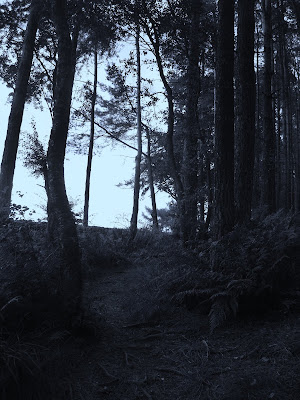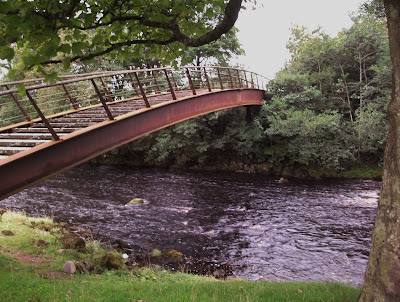THE ST MICHAEL'S MASTERPIECE
CHURCH STOWE
NORTHAMPTONSHIRE
St Michael's Church dates back to Saxon times and was built upon a Neolithic worship site. The church was originally dedicated to St Ninian and then to St Peter and St Paul before its rededication in 1560 to St Michael. The tower with its medieval battlements is original (circa 950-1100) but the body of the church has been rebuilt twice, once in 1639 and again in 1859. Preserved in the church are seven early Roman and Saxon carved stones; three built into the tower and the others are in the Baptistry. There is an old legend which says that the Lord of the Manor had chosen a site for the church but some supernatural entity, sometimes the devil in these instances, moved the foundation stones of the church to a different location over eight consecutive nights before being built on its present site.
Upon entering the Sanctuary around the altar, on the right side can be seen a marvellous funerary monument by the great sculptor Nicholas Stone (c. 1586-1647) Master Mason to King James 1st and to King Charles 1st. The effigy is of Lady Elizabeth Carey, born Elizabeth Neville around 1545; she married Sir John Danvers (1540-1594) and later in 1598 Sir Edmund Carey (1557-1637).
The marble monument was commissioned by her son, the Earl of Danby and it was completed in 1620, ten years before Lady Elizabeth's death in 1630 aged 84. So we can say it is a very good likeness of her Ladyship as she les there resplendent in all her finery.
She lies as if sleeping in a fine ermine robe which is open to reveal a masterfully carved and delicately embroidered bodice. her head is partially wrapped in cloth but rests elegantly upon an equally well carved pillow.
The exquisite detail even down to her tiny shoes, one of which is supported by her heraldic griffin, is awe inspiring and one can see why this is one of the greatest pieces of funerary monuments, certainly of the works of the master Nicholas Stone, second only in importance to his monument to the poet John Donne in St Paul's Cathedral.
The marble monument cost £220 in its time and this magnificent tomb has lain almost hidden and escaped the destructive hand through the passage of time; it is a true treasure and a testimony to the art and skill of the Master Sculptor - Nicholas Stone.
Leaving Lady Elizabeth to sleep away the centuries, on the opposite side of the altar, the left as you enter the Sanctuary, is another stone effigy, that of Gerard de Lisle (1304-1360).
The grey Purbeck marble tomb of Sir Gerard de Lisle shows him as a medieval crusader knight ( he was knighted in 1327 and created Baron Lisle in 1357). he lies cross-legged with his tunic over his chain mail and in his left hand he is holding a shield with a long-tailed lion. the front of the tomb bears a shield depicting the arms of the de Lisle family.
in 1310, during the reign of Edward 11, the Lord of Stowe, Sir Gerard's father, took up arms against the King and was taken prisoner and executed. Stowe Manor was seized and held by the King.
When Gerard showed loyalty to the Crown and took part in the Crusades, his father's possessions were restored to him and he became Lord of the Manor. Gerard fought at the Battle of Crecy in 1346 and married twice: Eleanor de Arundel sometime after December 1329, and Elizabeth le Strange, sometime before July 1351.
But there are other great monuments to see within the church and after admiring Sir Gerard, we should turn to his left side, left of the altar to see the magnificent monument on the north wall.
This is the memorial to Dr Thomas Turner, President of Corpus Christi College, Oxford, who bequeathed the manor and estates to the governors of a charity for the relief of poor widows and children of clergymen. This vast wall tablet is by Thomas Stayner (1668-1731) and is perhaps his most ambitious work. Carved of variegated marble and erected by the Sons of the Clergy Corporation in gratitude for a legacy of £18,000 with which the Corporation bought the Manor of Stowe.
The two life-size figures on either side show Doctor Thomas Turner on the left, holding a book and resting one foot on a terrestrial globe, while on the right (above) the other figure represents 'Christian Faith' balanced on a celestial globe.
Before leaving the church also take note of the Monument to John Day, also on the north wall. Day was the Controller of the Foreign Post Office and his monument was erected in the church by his daughters who commissioned John Middleton of Towcester to do the work. One of his daughters was the third wife of the Reverend John Lloyd D.D. who was Rector of Stowe from 1754-1789.






















































